What’s the Best Exercise Style for Your Body
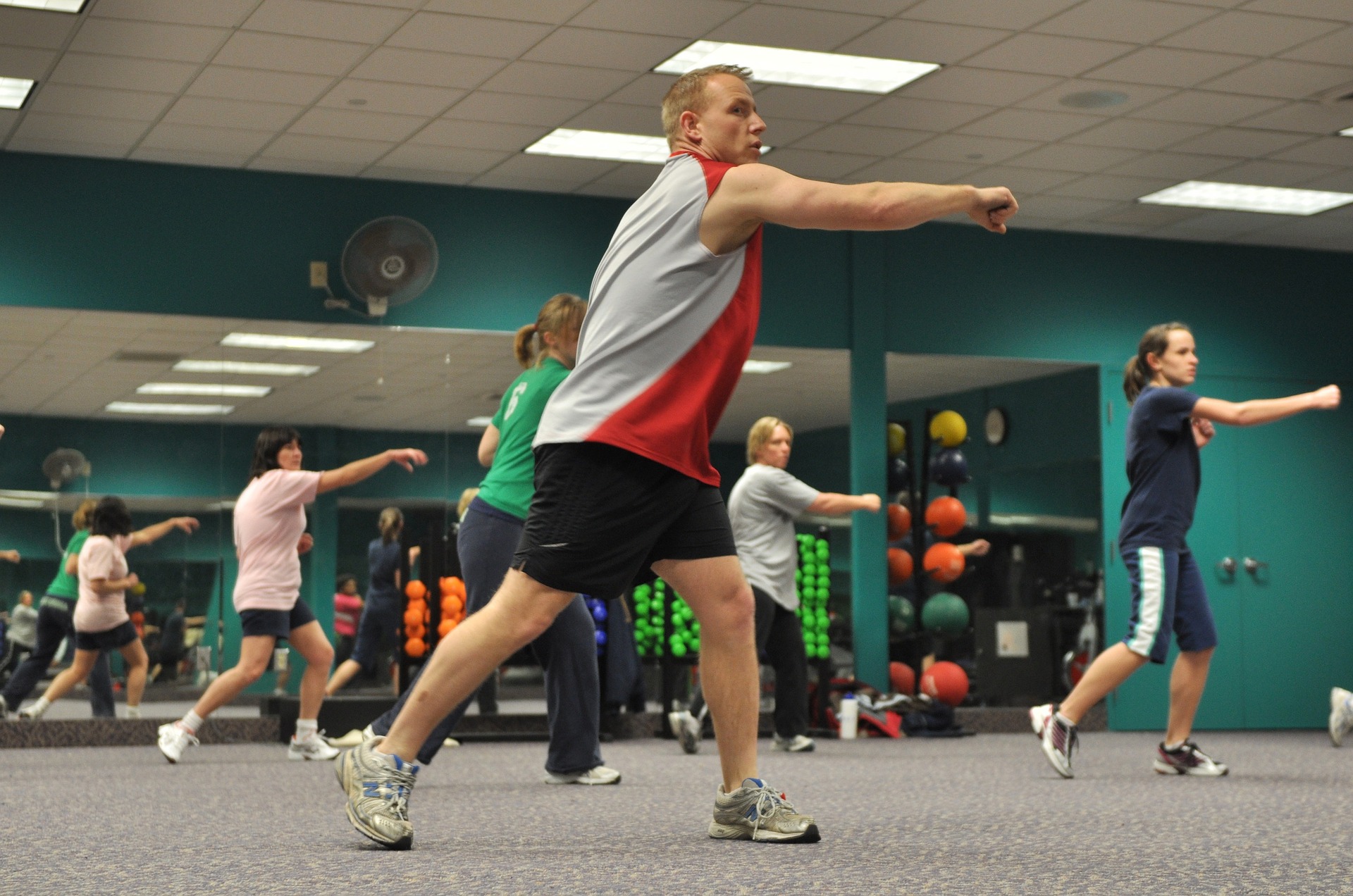
Starting a new exercise regimen can be a daunting task. Depending on your level of ability and starting point, some exercise routines may be better for you than ever. The key is finding something your body can handle and that your brain can enjoy.
Talk to Your Doctor First
If you have a history of health problems and pain, it’s important that you talk with your doctor before starting a new regimen. Your chiropractor can set you up with some simple therapeutic exercises to get you started, then you can build from more. You can also ask your primary care provider what level of exercise you should be doing if you have any heart or lung problems.
Set Specific Goals
Setting specific goals is a great next step. Ask yourself why you want to start working out? You’ll never maintain the motivation to stay active if you don’t have a clear goal in mind. This will also guide what kind of exercises you should do.
Let’s look at a few common goals and explore some options.
“I’m just getting started with exercise and need to strengthen my muscles to avoid pain.”
It’s easy to feel like you’re starting from square one if you’re in this situation, but it’s not as daunting as you may think! The trick is to start small and build upon habits and ability.
If you experience a lot of pain from activities, try low impact workouts like swimming or walking on soft surfaces. This is also where therapeutic exercise or physical therapy can come into play. Doing gentle, strengthening exercises with little or no weights can be a great way to build a foundation before taking the next step.
“I’m not in a lot of pain but I want to lose weight.”
The great news about having weight loss as a goal is that there are variety of ways to achieve that goal. Aside from eating better, a combination of aerobic and strengthening exercises can have you well on your way to your goal weight. It’s a common misconception that people should focus only on aerobic exercise, but building up the muscle to support those high powered exercises is important to prevent injury.
Whether you want to exercise in the gym or on your own, there are plenty of options. You can start small by walking and hiking or jump right into jogging and biking if you’re up for the challenge. There are also an endless amount of YouTube videos and apps that provide with varietal at home routines if you’re more of a homebody. Whatever you choose, make sure it’s something you enjoy.
“I’m aging and want to maintain my independence and balance.”
Nobody likes to face the fact that their fitness and body isn’t what it used to be. Overtime, our musculoskeletal system takes a lot of wear and tear and the body can begin to deteriorate with age. It’s important to get ahead of the curve and choose exercises that will help you maintain balance and stamina.
Chiropractic is a great way for older adults to maintain coordination and mobility. When paired with the right kind of exercise, you can stay active long into your retirement. Low impact exercises and yoga are two great ways to stay active. Low impact exercises allow you to maintain muscle without putting strain on your aging joints. Yoga and tai chi can help reduce pain and help you maintain balance.
Don’t Give Up
Remember, these are just general recommendations. It’s important to recognize when a routine simply isn’t working for you. Don’t get discouraged and stop altogether, just try something else. If you have questions about your level of ability, call your doctor to discuss your options today.
About the Writer
tech
4 Effective Low Impact Exercises
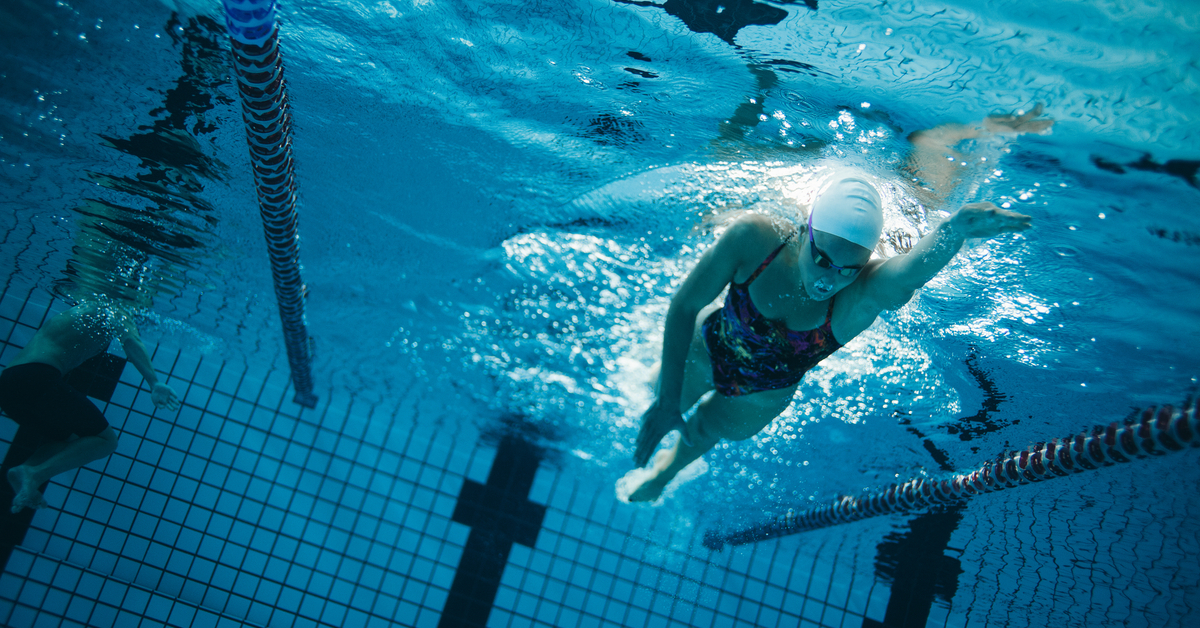 Daily exercising is essential to a healthy lifestyle. You might hear the term “low impact” exercise and assume that it’s a slow, not effective workout. However, low impact exercises are perfect for those who have stiff or sore joints, are recovering from an injury, or those who just want to switch up their current routine! Here are some of the best low impact, but still effective, exercises you can try today.
Daily exercising is essential to a healthy lifestyle. You might hear the term “low impact” exercise and assume that it’s a slow, not effective workout. However, low impact exercises are perfect for those who have stiff or sore joints, are recovering from an injury, or those who just want to switch up their current routine! Here are some of the best low impact, but still effective, exercises you can try today.
Swimming
Swimming is fun, relaxing, and good for your body! Because our bodies are buoyant, water in the pool puts virtually zero pressure on our joints. Speaking of joints, swimming in a heated pool can actually offer pain relief for those of use experiencing stiffness or joint pain. The resistance in the water targets your muscles and holding your breath is a great lung workout.
Elliptical Trainer
The elliptical versus the treadmill is often debated. Most runners wouldn’t consider substituting a run on the treadmill for a 20 minute elliptical workout. But, if you’re looking for a low impact way to keep your whole body moving, the elliptical might be for you! The motion of the elliptical mimics the natural foot path of how you run, walk, or jog. This motion helps prevent strain on your joints, but still allows you to get a great cardio workout.
Light Walking
Walking is an extra convenient low impact workout because, it can be done literally anywhere! If you are able to get up and walk 10 minutes in either direction, you are able to have a quick and beneficial workout. Walking is very low impact so adding some hand (or ankle) weights and seeking out some hills is a great way to pump up your workout. If you find that your joints are still hurting after a walk, try avoiding concrete or asphalt and opt for a wooded or grassy trail.
Barre
Former dancers will rejoice! Barre classes are centered around ballet positions and is targeted to increase muscle stamina and core strength. But don’t worry, you don’t need and prior dance experience to attend a class. Barre is named after, surprise, the wooden are that is anchors a wall found in ballet studios. Classes are done barefoot and usually do not involve any weights. Instead of large and intense movements (think squats) found in other strength classes, barre uses very small increments called isometric movements. These movements are often gentle on joints and don’t require a ton of equipment, making barre a pretty intense low impact workout.
Now that you’ve gotten the run down on low impact workouts, it’s time to give it a try! You can start with whatever is most convenient for you, then slowly start integrating these joint friendly workouts into your weekly workout schedule.
It’s always a smart idea to check in with your chiropractor before making any extreme changes in your workout plan. Consult with one of our doctors today!
About the Writer
tech
A Quick Guide to Avoid Common Lifting Injuries

Are you looking to ramp up your fitness plan with some serious weightlifting? Or maybe you’re just a weekend warrior who is ready to tackle their next big home improvement project? Either way, you’ll need to tap into some key techniques that will allow you to go beyond your day to day capabilities and do some heavy lifting.
Protecting Your Knees During A Squat
One victim of improper lifting is the knee. An immense amount of pressure is put on this joint to support the weight and strength of the rest of your body during moments of intense lifting. Overuse and improper use of your joints could cause osteoarthritis, stressed tendons, and limited mobility. That’s why it’s important to use the right technique when performing a lift that relies heavily on your knees, like the back squat.
The back squat is performed with the weight bar rested across the shoulders of the lifter and puts a strain on the hips, quads – surrounding the knee, and lower back. Moving from standing to a near sitting position and back, this move puts a lot of weight into the knees to support the movement. In daily life, you could find yourself squatting when lifting your toddler, going to the bathroom, or picking up boxes. Ryan Robertson, owner of Brickhouse Crossfit in Downtown Roanoke has joined us to demonstrate a proper squat technique.
Ryan’s top tips for protecting your knees during your squats are:
1. Perfect your air squat first
2. Keep your toes pointed out slightly
3. Send your hips back first before moving down through your knees
Protecting Your Back During A Deadlift
Two of the most common areas that heavy lifting can incite pain and injury is the upper back and neck and the lumbar spine. Repetitive stress on the back gradually causes improper alignment of the spinal column and may give rise to a herniated disk. If you aren’t lifting heavy objects, whether in your day to day or at the gym, you could be at risk for chronic back pain as a result of injury to a herniated disk.
One of the most common lifting techniques that lead to back pain is the deadlift. Ryan defines deadlifts as really any time you pick something up off the floor in your daily life – but for him, it’s typically in his gym. Essentially, you’re lifting the bar and weights up from the ground, rather than a rack. This kind of lifting works your lower back, gluteus maximus, hamstring, quads, and more. Outside of the gym, this could be when you’re bags of groceries from the ground, moving bags of topsoil, or even lifting your child from the ground.
Here are Ryan’s top tips for protecting your back during a deadlift are:
1. Keep a Flat Back
2. Keep Your Core Tight
How To Find Relief In the Event of An Injury
Preventative exercise is a great way to improve the strength of the muscles and joints to prevent pain from arising from day to day activities.
Dr. Skinner of Tuck Clinic in Roanoke, VA says, “Keeping muscles strong around the joints protects the joints from excessive forces. Making sure that we are performing the exercise properly is very important. Consulting with a fitness professional, like Ryan, can help tremendously in getting on the right program. “
If you find yourself in pain after an intense workout or even working around the house, the first thing you should do is ice! Your body’s first response to an injury is inflammation and ice should be the first line of defense to keep swelling down. During the first few days of an injury, try applying ice for about 10 minutes once an hour if it is available to you.
If you’re still suffering from pain after an extended period of time, it may be time to visit a chiropractor for an evaluation. A thorough evaluation can determine what’s wrong and develop the proper course of care for your unique challenges. From electrical stimulation to spinal or joint manipulation, we can help you find relief for your acute pain in an affordable, non-medicated way. In some cases, we can consult with your primary care or local orthopedic specialist to help with a diagnosis and treatment.
“We are really lucky in the Roanoke area – we have a great network of diagnostic imaging centers and orthopedic specialists to work with to help our patients feel better,” says Dr. Skinner.
Are you ready to take your fitness plan to the next level? Good luck, and just like Ryan said – Have fun!
About the Writer
tech
Keep Your Young Athlete Moving
There is a reason that NFL teams keep a chiropractor on staff to treat their athletes. Chiropractic care is one of the only ways to treat an injury and reduce pain from the inside out, while keeping the minds of their athletes clear headed and free of the fog that medications often cause. But football players aren’t the only athletes that benefit from chiropractic treatment of injuries. We’ve heard and shared stories from runners, gymnasts, and even soccer players about how they have regained mobility or improved performance after chiropractic care. If the sport includes the use of your musculoskeletal system (aka of them), the athlete can benefit from chiropractic care.
Supporting Growing Athletes
For growing young athletes, it is especially important to treat a sports injury from the source to avoid medication or surgery. According to John Hopkins Medicine, approximately 30 million children and teens participate in sports annual. Of those, 3.5 million sports injuries occur each year. Being active in youth sports is a way for children and teens to get involved in the community, stay active, make friends, and learn focus and dedication. While it’s important for them to learn what a setback looks like, no parent ever wants to see their child suffering from a severe injury.
With growing bodies and growing minds, the reactions of young athletes are often slightly slower than that of their adult idols, resulting in more injuries for the group overall. Tuck Clinic sees patients as the result of a single incident, as well as injuries that are a result of repeated wear and tear. Treating these young athletes in this vital time of development is not something that should be taken lightly. The choice of treatment could quite literally make or break their future in sports.
Studies have shown that chiropractic care can not only treat an injury incited by over activity, but even work to improve performance. This is because the proper alignment of the body’s musculoskeletal system can improve balance, strength, flexibility, and coordination.
Sports Injury Treatments At Tuck
At Tuck Chiropractic Clinic, we like to view sports injury treatments with three pillars of focus: injury prevention, joint manipulation, improving function and enhancing performance . When given the opportunity, we work with athletes to proactively take care of their alignment, hydration, and nutrition to assure that the body is fully supported on all fronts. We can help make sure they’re doing the proper conditioning and taking care of their bodies in between strenuous practices and games.
When facing a sports injury, we provide joint or spinal manipulation therapy to restore function and improve mobility . This may be able to get kids off the bench and confidently scoring goals in a shorter time than would be required by surgery or a more severe injury that could have been avoided through an active chiropractic care plan. We can help these athletes condition themselves to get back on the field faster.
We also work with athletes to provide maintenance or wellness on their bodies to increase range of motion and therefore improve athletic performance. Our clinics across Southwest Virginia partner with local high school and college teams. We’ve contributed to the overall athleticism of athletes from Ferrum College baseball players to Radford Track and Field, and even Lord Botetourt High School Lacrosse players! It’s incredibly rewarding for us to have the opportunity to help these young athletes reach their personal fitness goals.
About the Writer
tech
Local, Kid-Friendly Ways to Get Active This Summer
Summertime is on the horizon and the kids will be let out of school soon. Do you have plans in mind to make sure both their brains and their bodies stay active over break?
Summer is a great opportunity to loosen the reigns at work and find more ways to bond with your kids, all while staying happy and healthy! Living around Southwest Virginia’s abundance of natural resources and small businesses that facilitate an active, healthy lifestyle makes it even easier. As people who embrace these amenities as often as we can, we’ve rounded up a few of the best ways we keep everyone in the family happy with summer activities.
Create Your Own Adventure
The Roanoke Outside Foundation, a subsidiary of the Roanoke Regional Partnership, was built to make outdoor activity in Southwest Virginia a core component of our community’s lifestyle. They work hard with local Parks & Recreation Departments, State Parks, local outdoors outfitters, and more to provide a comprehensive website of resources for anyone looking to get out and get active in the region.
One of the special features on their site is the “Create Your Own Adventure” feature, an interactive way to plan a full day in the outdoors where everyone can have a say in the adventure! Sit down with your kids at the computer and take a few minutes to talk about what they’d like to do that day. You can choose from land or water and then explore a variety of options. You find anything from your favorite hiking trail, to a special river tubing spot, to a place you can go horseback riding! Where will your next adventure take you?

Take Advantage of the Greenways
Municipalities across the Roanoke Valley have banded together to build up the Greenway Trails we know and love. For more than a decade, local efforts have been able to build up 26 miles of greenway trails across the valley, reaching from Vinton, to Salem, and now out towards Botetourt!
The best part about the greenway is getting lost in the lush flora and fauna of our region while knowing your favorite ice cream shop or tap room is just a few short steps off of the greenway! The greenway is never too far from family favorites like Blue Cow Ice Cream, River Rock Climbing, or Launchpad Salem! Pack a lunch for the family and rent some bikes or just start strolling down the green way.
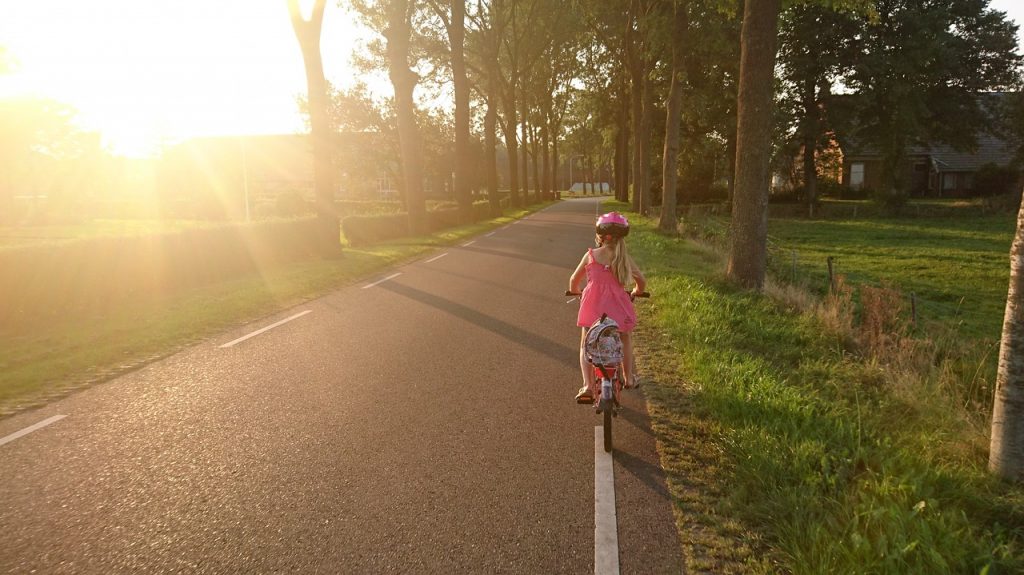
Join a Community Gym
While we hope you’re a gym member year round, they especially come in handy with the summer! Sometimes we just need to let the kids blow of some energy while we hang out by the pools, or vice versa. Luckily, Southwest Virginia has no shortage of gyms and recreation centers of every variety. While corporate places like Planet Fitness are great for your health needs, there aren’t a whole lot of options for kids. That’s why we recommend looking into one of the locally run recreation centers.
Green Ridge Recreation Center in North Roanoke works in partnership with Roanoke County Parks & Recreation to provide an opportunity for families of all shapes and sizes to have a happy, healthy, active lifestyle. From their outdoor water park, Splash Valley, to the summer education programs like gymnastics, your kids will stay active while you can get those extra miles on the treadmill in.

Carilion Wellness Centers are now located in South Roanoke, Botetourt, Downtown Roanoke, and Smith Mountain Lake. No matter where you are in the Valley, you’re never too far away from an opportunity to get active. In fact, the Botetourt location is right across the road from our Clinic!
Local branches of the YMCA are a great way to stay active while giving back to your community. The fee you pay for your membership goes to supporting active and stable lifestyles for underprivileged children in your area. They also have reciprocity for their different locations. If you’re a member of one, you can visit any of them in the area! They also have a great summer program for kids if you’re unable to take some time off.
Whether you prefer to use indoor amenities or natural outdoor adventures to stay active this summer, just make sure everyone in your family gets a chance to have a day where they get to choose their own! Exploring the interests of everyone in the family will bring you closer together and keep everyone engaged in keeping up with a positive lifestyle.
About the Writer
tech
Desk Friendly Stretches for Your Entire Back
So many people spend long days at work sitting – 86% of Americans to be exact – that there’s a non-profit organization centered around getting desk workers to stand up! According to JustStand.org, claims that people spend an average of 12 hours sitting each day!
Sitting is often a major contributor to back pain. When we’re focused on the task at hand and often working on a computer, we tend to hunch over and put pressure on our lower back. While it’s important to get up and walk around about once an hour to get your heart rate going, it can also be helpful to get a little stretching in! You can take care of your daily stretch session right at your desk with these moves:
Neck Stretches
Neck Rolls are one of the easiest stretches you can do! The trick is to move slowly to make sure you aren’t putting too much fast pressure on your cervical spine. Slowly lower your ear to your shoulder. Hold here for a deeper stretch or continue to lower your chin down and across to your other shoulder. Reverse and repeat!

The Neck Grabber is a great way to open up the back of your neck, trapezius muscles, and between your shoulder blades. Lace your fingers and place your hands so that the bottom of your index finger rests where your skull meets your spine with your thumbs loosely on your neck. As you lower your chin to your chest, bring your elbows towards one another in front of your face and hold. As a counter stretch, you can then raise your chin up, open up your arms and shoulders, and push your chest out. Move back and forth between positions as desired.
Shoulders & Upper Back
Over the Head stretch will loosen up those hunched over shoulders and relieve pressure from the lower back. Simply interlace your fingers with your palms facing upwards and outstretch your arms! If you pretend your arms and head are attached to a puppet’s string, you can stretch even further.

Eagle Arms are a great way to stretch out between your shoulder blades. With your arms straight, cross your arms over one another. Then, bend at the elbows to bring your arms to 90 degrees. The back of your hands should be facing one another. For a deeper stretch, you can twist your arms at the wrist to bring your hands into a prayer position. Once you’re here, you can move your elbows up and down to really work your upper back and shoulders!
Low Back Stretches
Sitting Pigeon and Knee Ups are a great way to let some pressure off of your lower back and loosen up your Iliotibial band that can impact symptoms of sciatica. For knee ups, all you have to do is sit with your back flush to your chair and your feet flat on the ground. Simply raise one knee up towards your chest while maintaining your posture. You can use your arms or hands to hook under your thigh or knee if needed.
To take this another step further into the pigeon, just rest your foot or ankle across on your other knee. Leaning forward with a straight back can intensify the stretch in your lower back if needed.
A Seated Twist can ultimately stretch your entire back if your flexibility allows. With your feet firmly planted on the ground, use the arms of your chair as leverage to pull your body around. Wait until your shoulders are turned as much as possible before extending the stretch through your neck and head. It’s important to maintain your posture during this stretch to get the full effect.
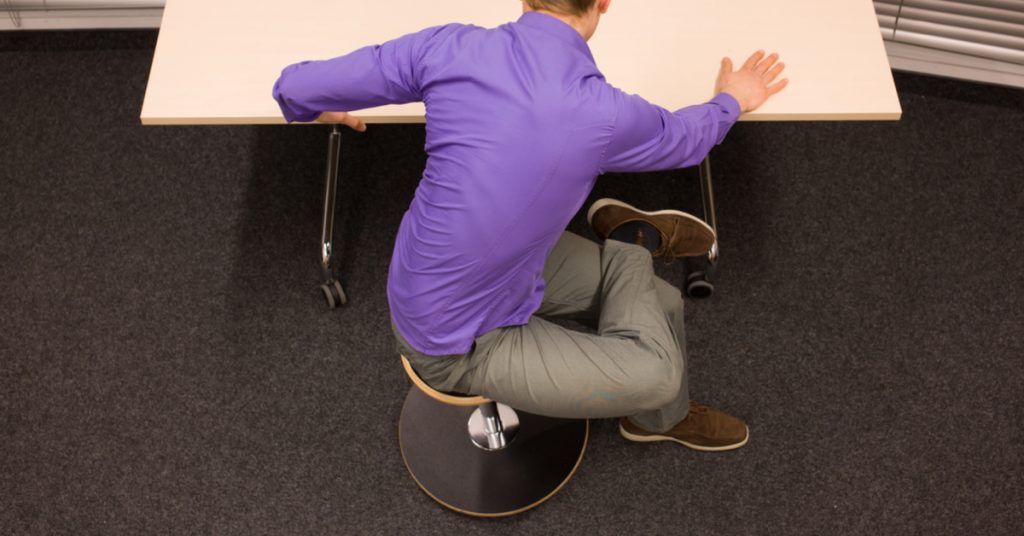
Bonus Stretch: Wrists and Hands
Carpal tunnel and tendonitis are common results of working with a mouse and keyboard for extended periods of time. These little exercises can loosen up the tendons that tighten up from repetitive work.
Wrist extensions can stretch out the four tendons in your wrist easily. Stretch your arm out in front of you with your palms facing upward. You can use the edge of your desk or your other hand to pull your fingers downward towards a 90-degree angle.
Prayer Hands is another way to achieve the same stretch by using your hands as leverage against one another. To extend the effects of this stretch, you can fan out your fingers and pull them back together to work the carpal bones.
About the Writer
tech
Recovery Tips for Long Distance Runners
At Tuck Chiropractic, we try to help patients discover the value in everyday exercise, as it’s commonly considered natural medicine for the body. In fact, there’s a global organization centered around the idea of it. While everybody requires a different set of strengthening and aerobic exercises, running is consistently one of the best ways to achieve overall health.
Running provides a sense of euphoria known as the “runner’s high”, it improves brain cognition, decreases the risk of cardiovascular disease, and builds an overall core strength in your musculoskeletal system to keep your body feeling fit. Running has such a great effect on the body and mind, some people find it almost addictive. Just ask the Blue Ridge Marathon Runners that will be flooding the streets of the Roanoke Valley on April 21. They’ll also tell you about the toll that running 26 miles on asphalt can take on the body.
Preparing for the Long Haul
The best way to plan for a speedy recovery is to plan ahead for your preparation. It’s not easy to work up to a 26-mile run, but it’s not impossible either! Doctors LaBarbera, Skinner, and Keene have great insight into the process, as they’ve all taken the Blue Ridge Challenge before.
The key is keeping up with a strict training schedule to make sure that your body is ready for the challenge. Part of this is eating the right foods, drinking enough water, and making sure your body is in alignment. Staying hydrated will keep up your stamina and protect your joints from the impact of a road run. Building up on carbs before a race will provide a great resource for the extra energy you’ll need to pull through. Finally, making sure you’re properly aligned from head to toe may reduce the pain you may feel during or after the race.
Embracing the Aftermath
Running a marathon or any long distance race is a huge accomplishment and certainly something to be celebrated. But before you run off celebrating, you’ll want to take care of your body and replenish yourself to prevent any lasting pain or injury.
Muscle soreness and fatigue is one of the most common issues a runner will have to overcome in the aftermath. Studies show this kind of intense activity can have a lasting effect for up to 14 days. It’s important to take steps to reduce inflammation and rebuilt muscle fiber. To do this, you’ll want to start taking care of replenishing your body the moment you cross the finish line. This includes keeping warm so that your muscles don’t cramp up and eating nutritious foods like bananas, chocolate milk, or protein bars to replenish and rebuild. After you’re refueled, you may want to consider an ice bath. An ice bath will constrict your blood vessels and reduce swelling, preventing your muscles from suffering from long-term inflammation.
It’s also important to seek medical assistance in making sure your body adjusts to the “come down”. During such strenuous activity, your body is likely to knock itself out of alignment because no matter how hard you train, one side of your body will always be a little bit stronger than the other. Sports chiropractors are trained in using their knowledge of the musculoskeletal system to relieve pressure on your knees, lower back, and feet and realign your body back to normal order after a long distance run.
Finally, take a break! You and your body worked hard for this accomplishment and deserve the time off. RunnersConnect.net suggest taking 1-3 days off to fully recover. During this time you can treat your body to plenty of replenishing foods, hot baths, and stretch. Then, you can slowly start getting back into the swing of things. Cross-training is a great way to get your blood flowing so your muscles can start rebuilding themselves without strain. After a week or two, you can pick back up on the running.
Whether you’re running a local 5k or America’s Toughest Road Marathon, these little ways of taking care of your body after a long distance run are the best way to prevent long-term damage and keep you doing the exercise you love.
About the Writer
tech
The Everyday Athlete
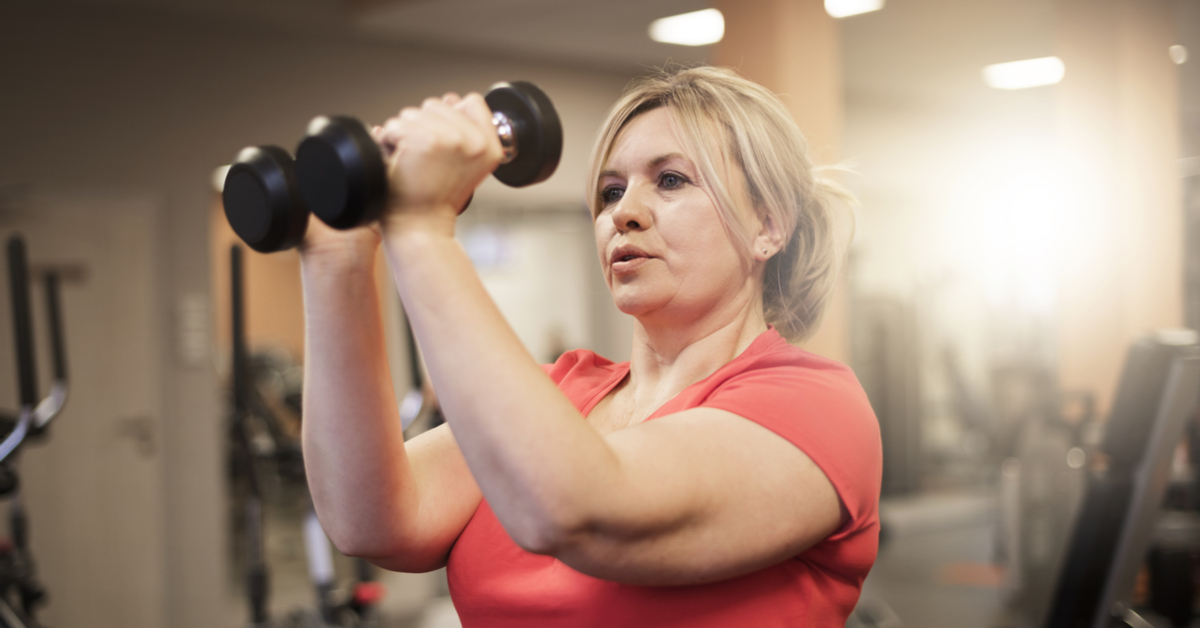
When you think about an “athlete”, it’s likely that names and faces like LeBron James, Serena Williams, or David Beckham come to mind. You might imagine their glorious game-winning goals, down to the buzzer shots, and match-winning hurls. Or think about how hard they work from day to day to refine their skills and keep up their stamina, and your mind might wonder how you’d never be able to achieve the same glory.
According to Dr. Brooke at Tuck Clinic Chiropractic in Fairlawn, being an athlete isn’t as out of reach as you might imagine. As a chiropractor who has received special training as a Certified Chiropractic Sports Physician, and has spent time training with Olympic athletes, Dr. Brooke knows the ins and outs of what it truly means to be or become an athlete. In fact, he shares his “Five Dimensions of Health” with all of his patients to better explain the concept: Physical, Chemical, Psychological, Sleep, Neurological.
What an Athlete Looks Like on the Outside
Again, when you think about an athlete, you probably picture them as well built and muscular, but that doesn’t always have to be the case. In fact, an “athlete” by definition according to Merriam-Webster Dictionary is “a person who is trained or skilled in exercises, sports, or games requiring physical strength, agility, or stamina”. So while you need some skills and strength in a certain area, you don’t necessarily need to be an all-star.
On the outside, an athlete is someone who takes the time to work on themselves through their preferred method, gets plenty of sleep, and takes measures to make sure their neurological wellness matches their physiological wellness. Because chiropractic care works with the neurological and musculoskeletal system, it’s a great place to start your journey.
Dr. Brooke recalls one of his patients that used chiropractic care as the first step of her journey towards being an “Every Day Athlete”. This particular patient came into Dr. Brooke’s clinic to seek relief for lower back pain. At her first appointment, she had a BMI of 40 and above the range of being morbidly obese. She received a treatment plan throughout approximately 35 days for her back pain and Dr. Brooke never heard from her again.
That is until 2 years later, she came back for maintenance care. Dr. Brooke remembered her name but when he saw her in his office again, he claimed he would have never been able to recognize her without her chart in hand. After she completed her care with Dr. Brooke, she embraced her newfound relief by starting a strict regimen of walking. She walked 2 hours every day and over the course of 2 years, lost 140 pounds. Yes, just from walking!
You see, you don’t have to be in tip-top shape to find the dedication to really hone in on your wellness plan of choice and become an “everyday athlete”.
What an Athlete Looks Like on the Inside
Speaking of dedication, beyond the physical element, there are two very important elements to this process that happen internally. That’s where the psychological and chemical aspects come in.
Whatever you call it: dedication, motivation, determination; something in your mind has to keep you moving forward. You need to have the right mindset to get up every day and stretch or make it to the pool for some laps during your lunch break. Having a positive psychological outlook on your daily wellness is even more important than your ability to perform your workout well.
The final component is the chemical component. What are you putting in your body? Dr. Brooke’s patient admittedly did a little more than just walking every day. She also adjusted her diet as a part of her wellness goals. When you eat foods with the right chemical makeup, your workouts are fueled better, your recovery happens faster, and even your mindset can be improved.
How will you get started on your journey to be an Every Day Athlete? We’re here to help.
About the Writer
tech
3 Ways to Approach Wellness As A Family
 Just like everything else in life, the stages of a family ebb and flow. From the first moment, you realize you’ll have a little newborn in 9 months to the moment you drop your kids off at their first high school team tryout. There are times when getting up and getting active won’t be ideal. Those late night feedings or nightmares don’t exactly encourage you to get up early to make a healthy breakfast. The days when you feel like you’re always on the go, running from one errand to the next, make you feel like it’s impossible to slow down and spend time with your family.
Just like everything else in life, the stages of a family ebb and flow. From the first moment, you realize you’ll have a little newborn in 9 months to the moment you drop your kids off at their first high school team tryout. There are times when getting up and getting active won’t be ideal. Those late night feedings or nightmares don’t exactly encourage you to get up early to make a healthy breakfast. The days when you feel like you’re always on the go, running from one errand to the next, make you feel like it’s impossible to slow down and spend time with your family.
While your kids might seem to have boundless energy and exercise, are they learning the right habits to channel it? Will their vibrancy and strength continue as they grow? It’s important to instill a healthy lifestyle into your children as early as possible. By feeding off their energy, you might even get a pep back in your step too! Here are a few ways to approach wellness as a family.
Make Mealtime a Priority
Healthy eating habits are the first step to living a healthy lifestyle. Beginning and ending your day with the right nutrition will support your mood, long-term health, and ability to expel energy in ways that contribute to your overall wellbeing. A study completed in 2011 concluded that exposing children to healthy foods and eating habits at a young age will encourage a positive predisposition towards a healthier diet and lifestyle as they grow up.
Invite your children into the kitchen with you and allow them to have input in their food options. Start with a healthy base of choices and work from there. Not only will it teach them the skills they’ll need later to compile their own diet, but it will help you in your efforts towards a healthier lifestyle, too. After all, you want to be a healthy, active grandparent when your little ones grow up to have kids of their own, don’t you?
A few simple rules to live by at mealtime:
1. Try to cook meals from scratch to avoid preservatives and unknown additives.
2. Eat more fruits and vegetables!
3. Find healthy snack foods that everyone can enjoy.
Fewer Screens, More Scenes
In 2009, Nielsen Co. reported that children between the ages of 2 and 8 spend an average of 28-32 hours watching TV or videos through a phone, computer, or tablet. The Kaiser Family Foundation found that children between the ages of 8 and 18 spend a minimum of 4 1/2 hours a day watching various screens.
Now, there’s nothing wrong with spending a little time in front of the TV to catch your favorite show. However, it does contribute to a sedentary lifestyle. If too much time is spent sitting and watching a screen, that means you’re spending too little time being active. Living in Southwest Virginia means having a natural landscape to keep your senses far more stimulated than a screen ever could!
Spending time together being active provides an opportunity for family bonding as well as getting your heart rate up! Find an activity everyone in your family can enjoy. Even if it’s as simple as taking your golden retriever, Ralph, for a walk every evening, it’s away to come together and get moving. If you’re looking for something a little more exciting, there are endless options in Southwest Virginia. From hiking trails on the Appalachian Trail or Carvins Cove to biking on the Greenway. If outdoors aren’t your thing, there are plenty of great facilities around the region that will help you have fun and get active!
Set And Reach For More Goals
Maybe you want to drop a few pounds and run in a local 5k this spring. Maybe Bobby wants to make the JV Baseball team next year. Whatever your goals are, try to approach them as a family. After all, your family should be your number one support system.
When you sit down together to set goals as a family, you can discover new ways to support one another. Whether that means more time tossing the baseball around the yard, or taking Ralph just a little bit further on your next run, every effort you make will put you one step closer to reaching your goals. When you do reach your goals, you have a group of people to celebrate with, too!
It’s important to remember that wellness and a healthy lifestyle look different for every family. Everyone has unique schedules and circumstances. Don’t try to keep up with the Joneses. Try to find what works for you and your family and embrace it!
About the Writer
tech
Strengthen Your Back, Strengthen Your Healing
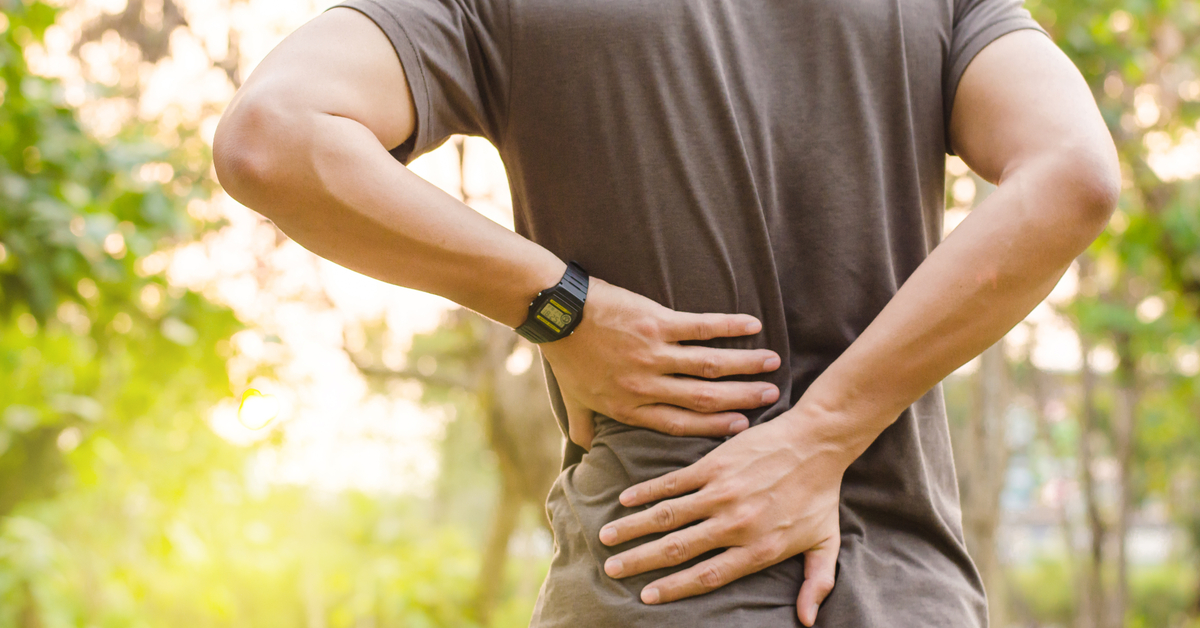
At any given moment, including the moment during which you are reading this article, approximately 31 million people are suffering from lower back pain. In fact, it’s the most common reason patients come into our clinics and the second most common reason for a general physician’s visit. While causes of lower back pain may vary from person to person, it is often a result of a sedentary lifestyle coupled with a spurt of activity and improper use of the back.
Why is the Low Back So Prone to Pain?
The human’s back is the most complex configuration of bones, joints, ligaments, nerves, and muscles in the body and happens to be the largest part of your body. As most of the weight of the body relies on the support of the lower back muscles and vertebrae, this is often the most common area of general wear and tear.
With most modern jobs require sitting at a desk for extended periods of time, there are fewer opportunities from day to day to keep up with a lifestyle that includes activities that support a healthy back and body. As a result of this sedentary lifestyle, there are also increased chances of individuals suffering from obesity and disc regeneration that contribute to the degradation of your lower back musculoskeletal system.
If you are experiencing lower back pain for a period of time more than 4 weeks, you could be suffering from acute or chronic back pain. While both of these issues may be relieved through the conservative care or chiropractic treatment, a well-advised exercise routine* may improve the effectiveness of treatments administered by your chiropractor. The combination of cardiovascular, aerobic, and strengthening exercises may lead to improved outcomes and relief for longer periods of time.
*Please consult your doctor to see if these strengthening exercises can help you.
Pelvic Tilts
When moving from a point of pain it’s important, to begin with low impact exercises that have very little danger of straining your back muscles. Hip lifts are a great way to strengthen your pelvic, gluteus, and stomach muscles, providing a strong trunk to support the weight of your body.
Lying on your back, bring your knees pointing up with your feet close to your hips. With your arms down at your side, begin to rotate your pelvis and tailbone downward, gently tightening the muscles in your lower back. Then, rotate your pelvis in the opposite direction and begin using your legs to lift your tailbone and lower back off the floor. With your hips, lower back, and midsection off of the ground, make sure your core muscles are tight and you are using your legs, shoulders, and arms to support you. Hold in this position for a few seconds, release, and repeat.
Half-Lifted Standing Fold
Once your deep core trunk muscles are strengthened, you can begin to explore other movements that strengthen and stretch your lower back. The half-lifted standing fold is a great way to strengthen your lower back while stretching your hamstrings.
Standing tall with your knees slightly bent to protect your knees, bend forward so that your body and your legs make a 90-degree angle. Rest your hands on your thighs or knees to support the weight of your body and protect you from straining your back muscles. Keep your head lifted and your back muscles tightened. Then fold all the way over to release.
Kneeling Extension
This exercise helps to strengthen your lower back and gluteus muscles to provide added support to your back and body. Starting on your hands and knees, with your back straight, lift your left leg straight out. You have a choice to hold out for 10 seconds or to lower and repeat. Make sure you spend the same amount of time doing the same movements with your right leg.
About the Writer
tech
You may also be interested in...
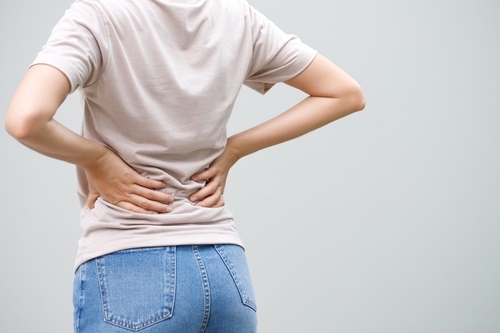
What Does a Healthy Spine Feel and Look Like?
Your spine is the backbone of your overall health—literally. It supports your body, protects your nervous system, and helps you move with… Read More
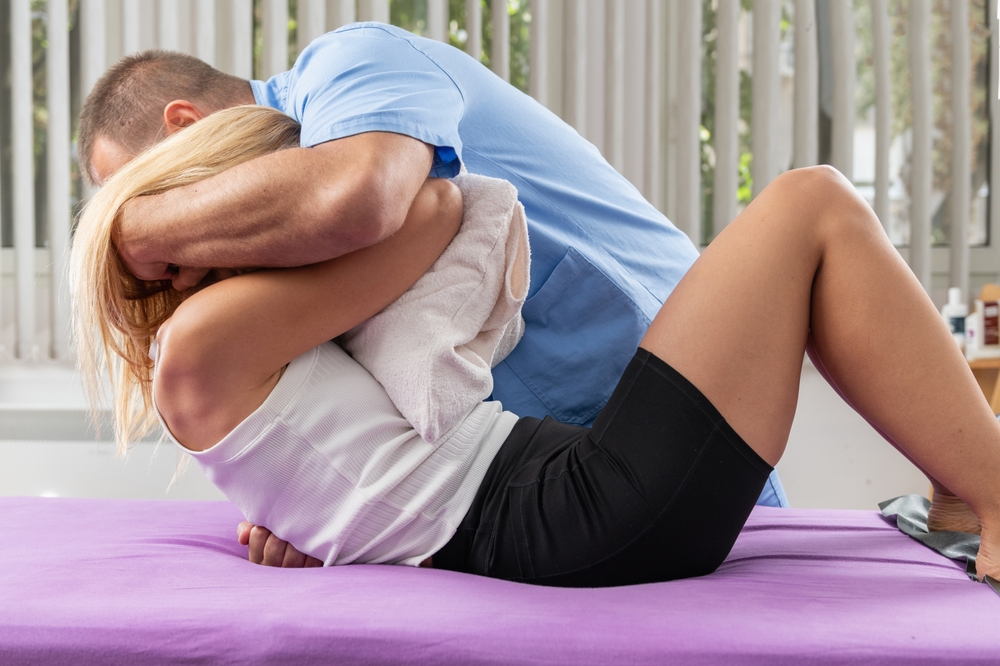
How Do Chiropractic Adjustments Work?
Chiropractic care focuses on the health and alignment of the spine, recognizing its vital role in overall well-being. A central component of… Read More
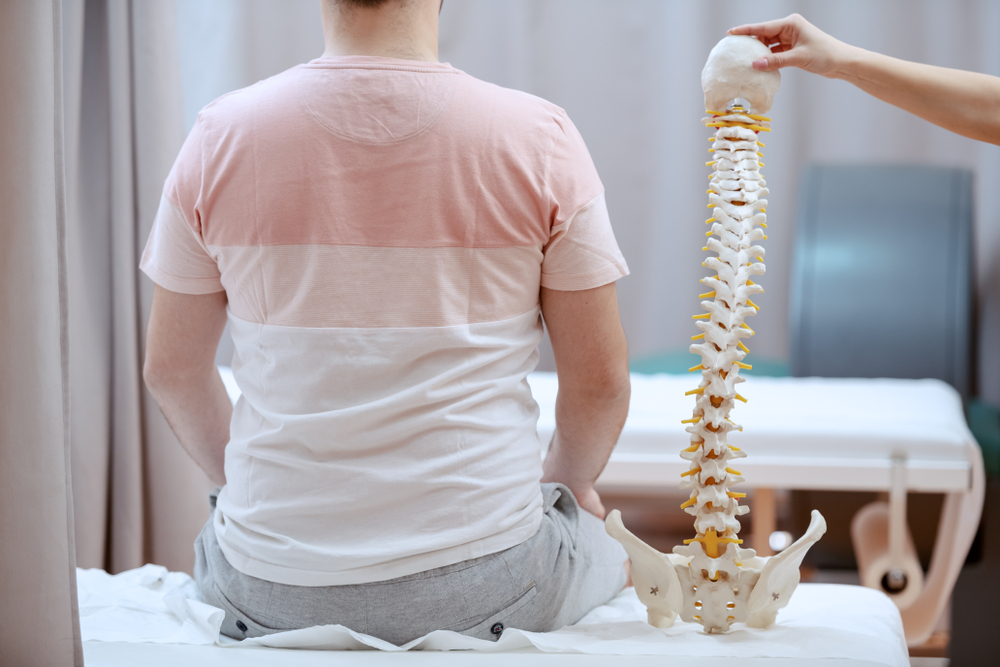
6 Types of Chiropractic Adjustments and How They Work
Chiropractic care is a popular form of healthcare focused on spinal health and overall well-being. Chiropractors use a variety of techniques to… Read More
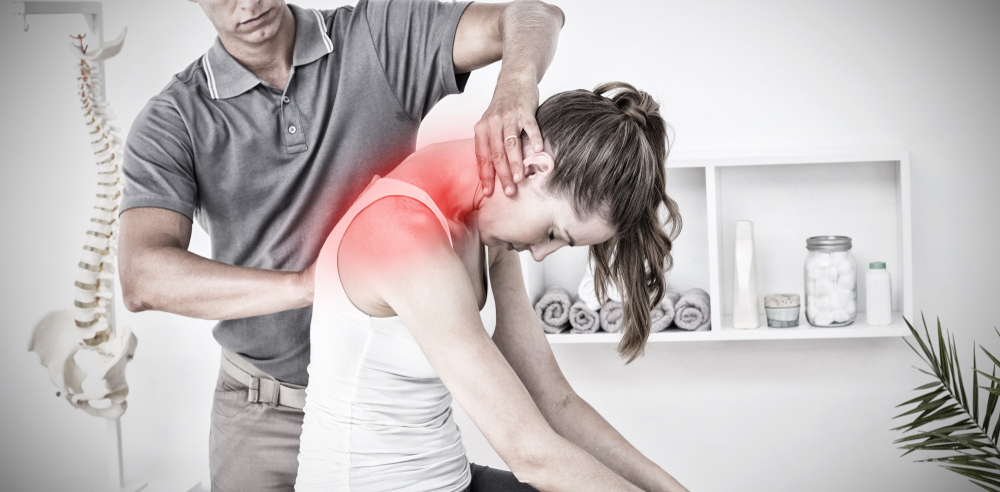
7 Researched Benefits of Chiropractic Adjustments
Chiropractic care focuses on maintaining spinal health and addressing misalignments that can cause a variety of health issues. The practice is growing… Read More

